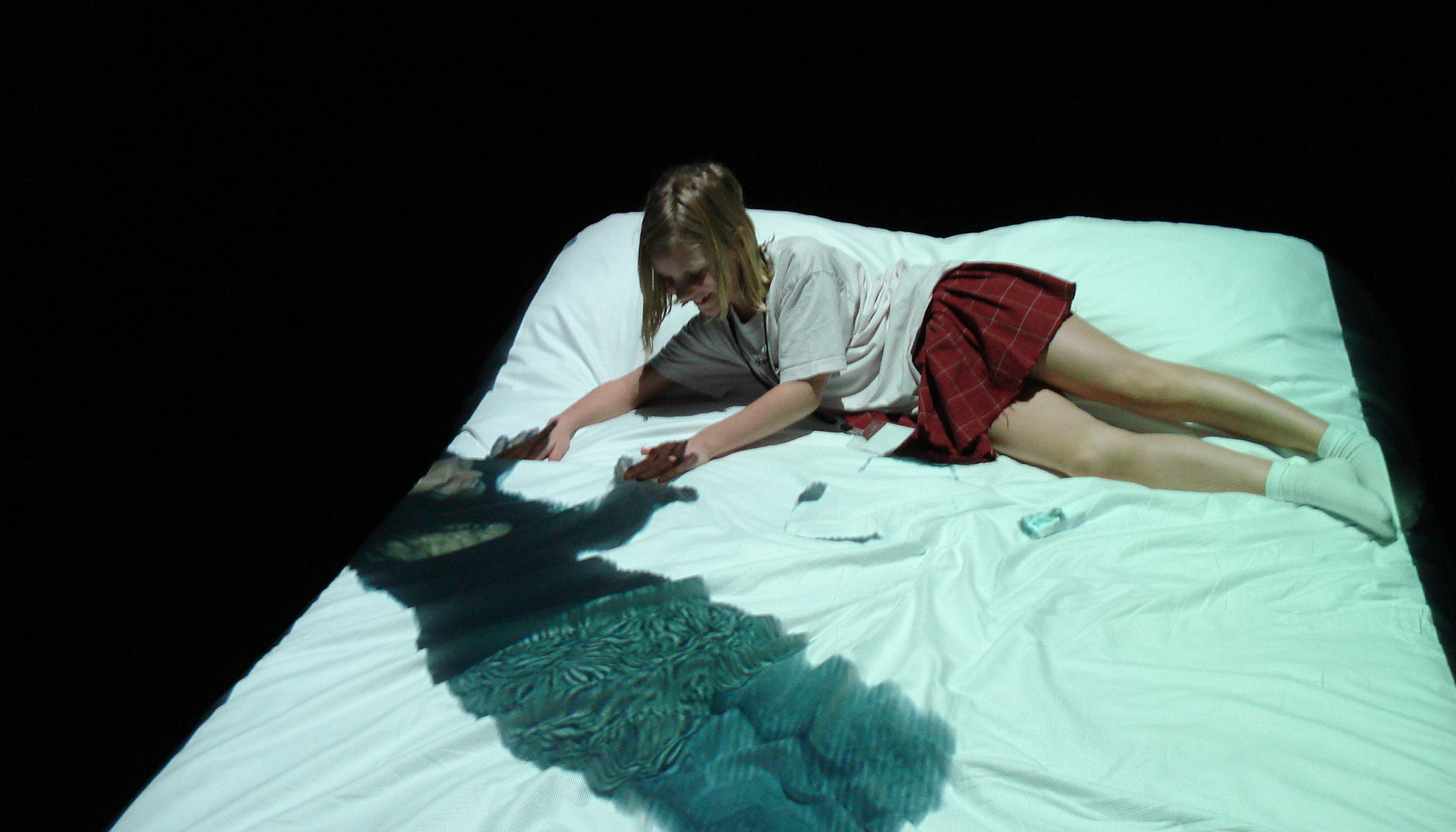Telematic Dreaming was created by Paul Sermon in 1992. The performance has two double beds located within both locations, and the above projector turns a bed into the support of high-resolution images that show a partner, intimately alive although being thousand kilometers away. Just like two people lie in the same bed via virtual display.
In my opinion, the work demonstrated how people interact and communicate with each other in the absence of physical contact, like Paul Sermon indicated in his essay wrote in 2000:
Telematic Dreaming, with its connotations of intimacy and dream states, extends telepresence beyond the screen to spatialize the site of interaction. The work explores presence, absence and the psychology of human interaction within technologically mediated communications.
In most and normal conditions, people unconsciously keep a certain distance with stranger. The interaction also remains polite and passive. However, such as the below image showed, most of participant closely interacted with each other like a couple. In the book, Welcome to Electronic Café International, Galloway and Rabinowitz also mentioned that:
Virtual space diminishes our fears of interaction. The absence of the threat of physical harm makes people braver.
The absence of face-to-face contact made a new possibility of interaction for participant and art performance. Moreover, Paul Sermon gave it an interesting metaphor, silent movie. As soon users can communicate by speech, they will resort to that means of communication alone – as speech is a dominant form of communication between complete strangers. Without speech the two users have to discover new ways in which they can interact.

Additionally, I think this artwork also pointed out a related issue, long-distance interaction. In the essay, Galloway and Rabinowitz also mentioned that their idea is to create an electronic, multimedia composite-image space which people separated by distance, language, values and culture could come together to collaborate. The concept of Telecmatic Dreaming, from long distance to zero distance, may potentially influence the further interaction design. It lets me recall that few months ago, Taiwan’s Tourism Bureau hosted an event titled “New York Times Square & Taipei – Join Hearts”. In this campaign, New Yorkers and Taiwanese nationals interacted with each other by simultaneously creating heart-shaped hand gestures, which were broadcast through live stream on billboards in Times Square and Taipei. Similarity, stranger can interact with each other without no geographic boundaries.



Very interesting Pohsuan, the project you mentioned that brought together New Yorkers and Taiwanese nationals. It resembles very much the Hole in Space project by Kit Galloway and Sherrie Rabinowitz, when they connected New York and Los Angeles in 1980. It also reminds me of their Electronic Café project, which was created to connect different cultures in LA. In the earlier part of your essay, you talk about how strangers interact with less inhibition and less fear of touch than would be typical in “real life.” That is very true, and it would good to know why you think this is the case. In other words, although people are separated geographically, there is still a quality of intimacy. I would review the essay by Roy Ascott, “Is There Love in the Telematic Embrace,” where he talks about engagement across networked spaces, in which the content of the artwork is the human exchange and communication. You are very right though in pointing out how Paul Sermon asks the participants to communication through their bodies, a very powerful way of demonstrating how intimacy can be achieved in telematic space. We will certainly explore this idea further tonight when Paul Sermon is our guest speaker.